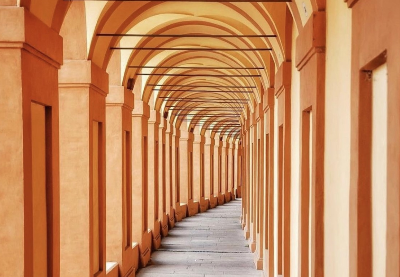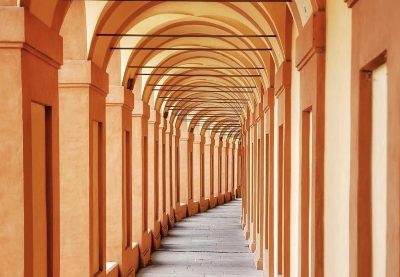...'I'm going to walk to San Luca!'... All the Bolognese have uttered this phrase at least once, either as a little bow or as a wish.
The walk up to the top of the Colle della Guardia to reach the Sanctuary of the Madonna di San Luca is a tradition that began in the 12th century, when the first church was built to guard and protect an icon of the Byzantine school depicting the Madonna and Child, which religious tradition attributes to St Luke.
According to this tradition, the painting was brought to Italy by a pilgrim (Theocles Kmnia) who received it in Constantinople (present-day Istanbul) from the monks of the basilica of Hagia Sophia with the commitment to take it to Monte della Guardia. Upon arriving in Rome, the pilgrim learnt that this mountain was at the gates of Bologna and arrived here, delivering the icon to the city in 1160.
The bishop of Bologna at the time was Gerardo Grassi and it was he who delivered the painting to Beatrice and Azzolina Guezi, two hermits who led a penitent life on the hill and who placed the image in the small church that already existed at the time. The cult of this Madonna of St Luke was immediately such that the influx of pilgrims required a larger and more suitable church, and so in 1194 the foundation stone was laid, arriving directly from Rome and blessed by Pope Celestine III.
For centuries, therefore, thousands of pilgrims traced the ascent to the hill simply by the work of their own steps: first a simple path and then a mule track, which was paved to facilitate the journey. Everything changed, however, on 28 June 1674, when work began on the portico, destined to be the longest in the world to this day. It came to this day thanks to the efforts of Don Ludovico Genaroli, who had worked for twenty years to promote the construction of the portico to protect pilgrims.
There are no less than 3,796 metres of covered and well-paved walkway, made up of 316 arches for the walk on the plain from Porta Saragozza to the Meloncello arch, and 350 arches for the hilly stretch from the Meloncello passage to the Sanctuary of the Madonna di San Luca, for a total of 666 arches.
The number of arches has a profound symbolic meaning: 666 is the devil's number, and the long, winding portico recalls the serpent, i.e. the devil, and terminating at the foot of the Sanctuary refers to the iconography of the devil defeated and crushed under the foot of the Madonna.
The construction of the portico was completed by the Bolognese architect Carlo Francesco Dotti (1670-1759) to whom we also owe the construction of the new basilica designed for the occasion of the portico and the Arco del Meloncello, the point where the portico leaves Via Saragozza and begins the uphill path to the top of the Colle della Guardia.
This great project was financed by the faithful, the guilds of the arts and the noble Bolognese families, in order to protect the pilgrims who went to make their vows to the Madonna of St Luke from the weather and the sun, and to make the procession easier, which still today every year brings the image kept in the Sanctuary to the city all the way to St Peter's Cathedral for a week of celebrations, before returning to its home on the hill overlooking Bologna.






